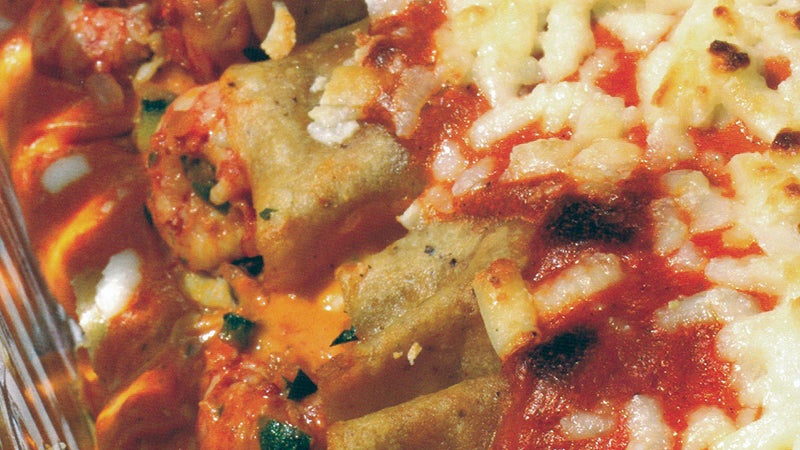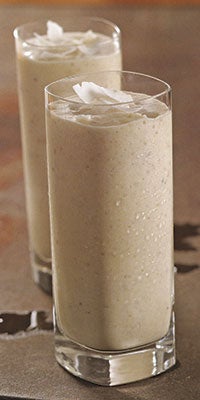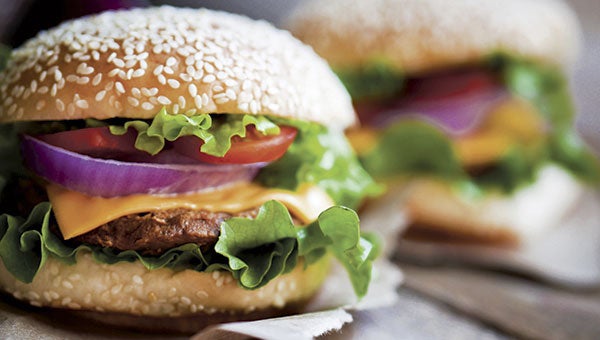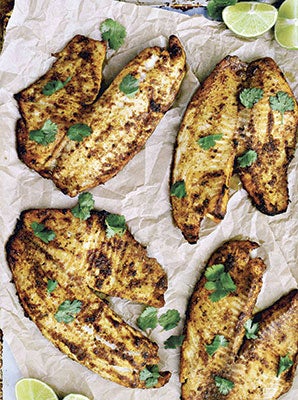Loofahs – they’re not what you think
Published 12:00 am Saturday, October 2, 2010
When one thinks of loofahs, we think of sponges used in spas to take away dead skin. Well, loofahs are vegetables that can be eaten like any squash when they are young. They are naturally sweet, cook very fast and really have a wonderful taste with Asian spices and seafood. The young loofah is a tender, adaptable vegetable with its porous texture and squash/cucumber flavor. It takes well to preparations in which it can soak up sauces and the flavors of other ingredients.
In China, loofah is steamed, boiled or stir-fried with garlic, onions or dried prawns, and it’s used as a cooling ingredient in spicy dishes. Of the two key types, the ridged variety, called angled loofah, must be peeled to remove its sharp ridges before cooking. The more bulbous, smooth loofah, or sponge gourd, can simply be sliced.
And they have still been around in our hot, dry September garden!
I have grown them from saved seed for several years. You may have a friend that has grown them as sponges where you can get seed. I was looking for seed in my favorite seed catalogues. Southern Seed Savers Exchange didn’t even have them. My favorite catalogue, Pine Tree, lists them under gourds (not in their Asian vegetable section) and does not mention eating them. Territorial does list them under Asian vegetables, while noting they are edible, they talk about how to grow them as sponges. They did have a hybrid called “seven happiness” – nice name. I don’t know about seven, but grow them not only for a sponge but also to eat, and they are a great addition to the garden for their flowers – prolific and long blooming large bright yellow flowers appear on the long vines best grown on a fence, trellis or arbor. Why talk so much about the seed? This is one you will have to grow. I don’t think you will find it in the Winn-Dixie vegetable section. I have a great little book, The Asian Grocery Store Demystified, and even there, no mention of loofah.
I recently read an interesting article in Saveur by Daniel Pinkwater (also author of Beautiful Yetta, about a Yiddish chicken – buy it for your children. It’s a great little book.)
He was eating in his favorite Chinese restaurant. The chef/owner comes over with a new dish saying, “I have something special, OK?” The dish was another stir-fry of a vegetable, a vegetable Pinkwater said he had never seen before. Pale green and pliant, it had a flavor somewhere between zucchini and cucumber.
“What is this we’re eating?” he asked. “Chinese vegetable,” was the reply.
“What’s it called?” he asked. The reply, “I don’t know the name in English. Eat. It is good for you.”
Then he asked the eldest son who was busing tables. “Jacky, what do you call this? Some kind of Chinese vegetable. My dad makes it good.”
So if you can grow or find some loofah try this Chinese stir-fry.
Chao Sigua
Stir-fried Loofah
Serves 2
2 tbsp. canola oil
4 cloves garlic, thinly sliced lengthwise
1 lb. loofah gourd, peeled and cut diagonally into 1½ inch-long pieces
Kosher salt and freshly ground white pepper, to taste
Sugar, to taste
Heat oil in a 14” flat-bottomed wok or nonstick skillet over high heat. Add garlic; cook, stirring, until golden, 15-20 seconds. Add loofah and 1 tbsp. water; season with salt, white pepper, and sugar. Cook, stirring until just tender, 30-60 seconds. Serve immediately.
A simple stir-fry or sauté with whatever spices you wish makes loofah a simple side for any meal. The next recipe is great. I have done it several times recently, and it is just fresh and simple.
Muop Tom Xao
Vietnamese Loofah and Shrimp Stir Fry
Serves two as an appetizer (Add some rice and make it a main.)
1 loofah
About half a dozen shrimp
2 cloves garlic
1 tsp. salt
Dash of fish sauce
Peel, de-vein and mince shrimp. Add 1 tsp. salt and mix. Set aside.
Peel loofah; slice lengthwise, then slice horizontally as thinly as possible. Mince garlic. Add a little oil to a hot pan. Add the garlic and shrimp, and sauté until shrimp is half-cooked. Add loofah, and sauté until loofah is softened and transparent, takes about another two to three minutes. Add fish sauce to taste.
I had always done this next recipe with zucchini but the loofahs are just as wonderful as the zucchini.
Shrimp with Loofahs or Zucchini
Serves 4
12 oz. loofah
1½ teaspoons salt
12 oz. peeled, good quality shrimp
5 tablespoons vegetable oil
6 cloves garlic, peeled and very finely chopped
3 oz. finely chopped fresh green coriander (cilantro)
1 fresh, hot chili, finely chopped
½ teaspoon ground turmeric
1½ teaspoons ground cumin
¼ teaspoon cayenne
3 small canned tomatoes, finely chopped plus their liquid
1 teaspoon peeled, very finely grated fresh ginger
1 tablespoon lemon juice
Scrub the loofahs, peel and trim them. Now cut them in four slices lengthwise. Cut each slice, lengthwise into four long strips. Cut the strips into thirds, crosswise. Put the loofahs in a bowl. Sprinkle ¼ teaspoon of the salt over the pieces. Toss to mix and set aside for 30-40 minutes. Drain and pat dry.
Put the shrimp on kitchen paper and dry them off as well.
Put the oil in a wide pan or frying pan set over medium-high heat. When hot, put in the chopped garlic. Stir and fry until the garlic pieces turn a medium-brown color. Put in the loofahs, fresh coriander, green chili, turmeric, cumin, cayenne, tomatoes and their liquid, ginger, lemon juice and remaining 1 teaspoon salt. Stir to mix, and bring to a simmer. Add the shrimp, and stir them in. Cover, turn heat to low and simmer for three minutes.
Uncover, turn the heat to medium and boil away the liquid, if there is any, so that you are left with a thick sauce.
Serve with basmati rice.





